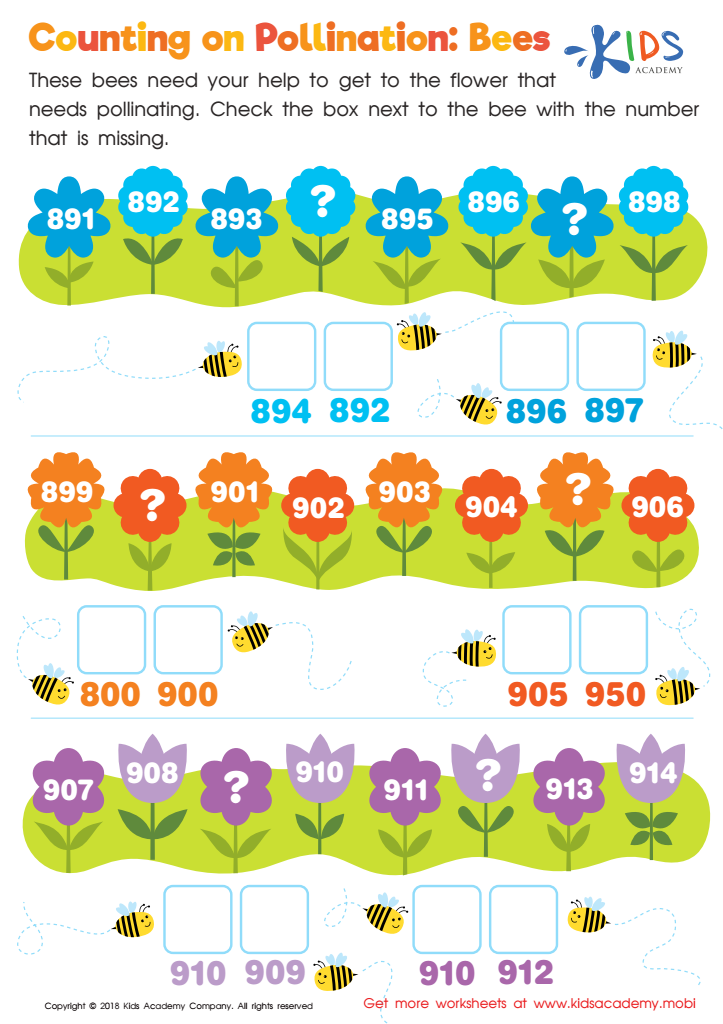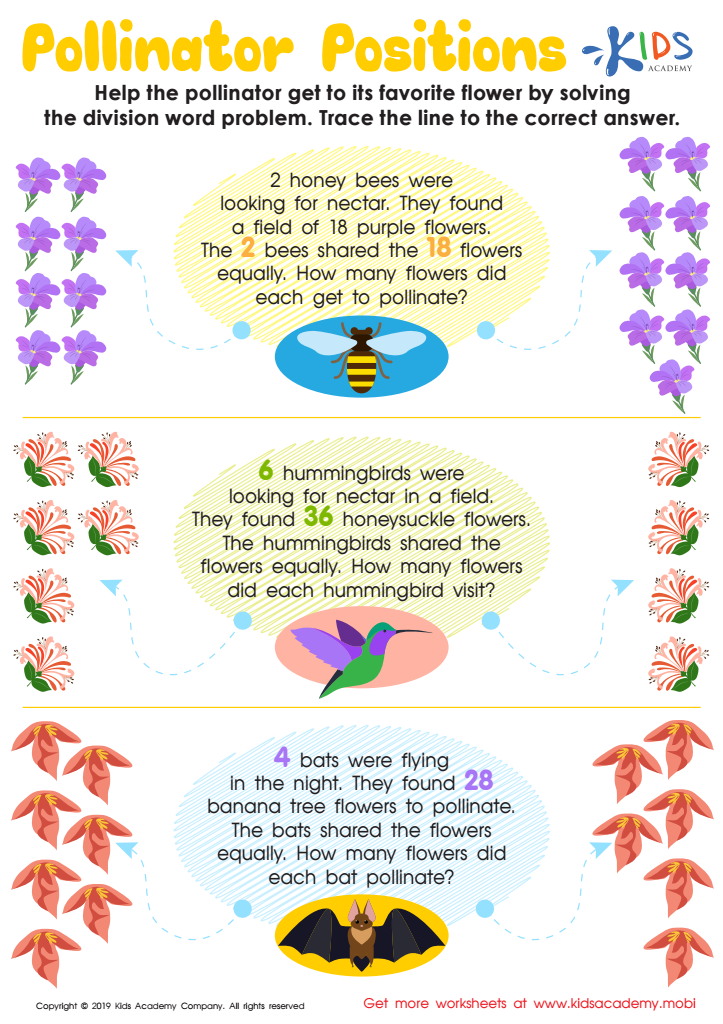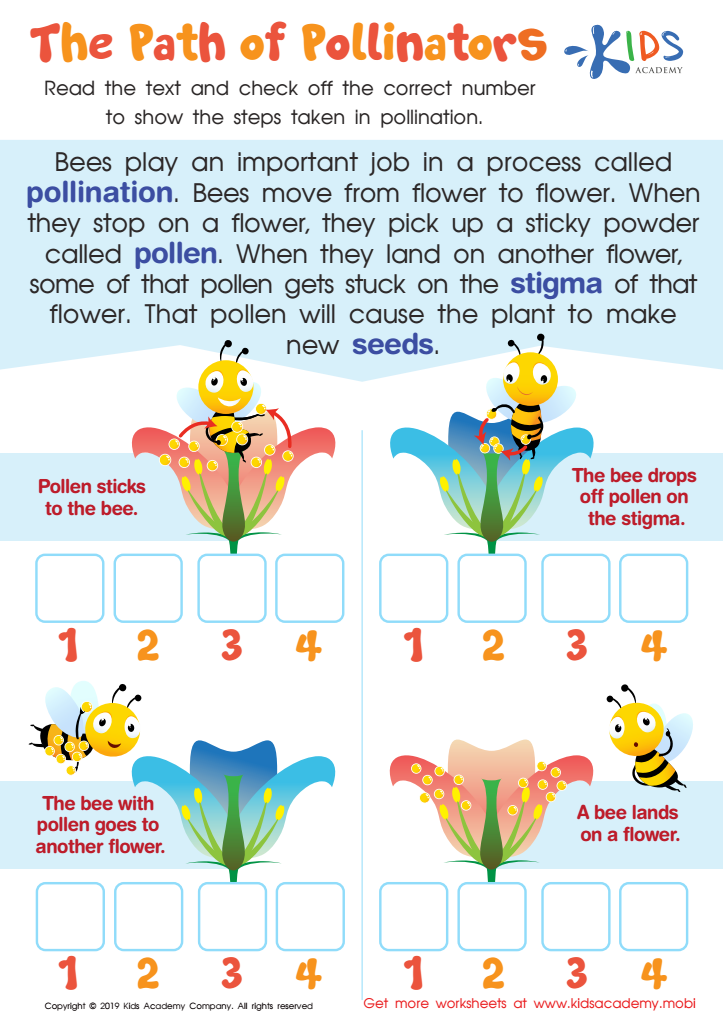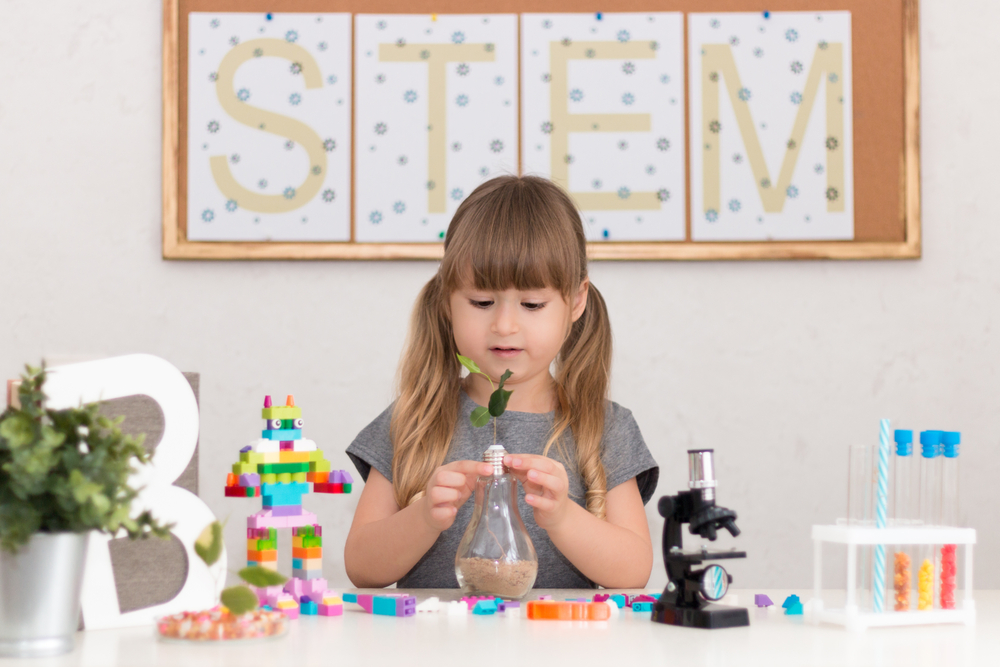Understanding pollination Normal Science Worksheets for Ages 3-8
3 filtered results
-
From - To
Explore the fascinating world of pollination with our "Understanding Pollination" Normal Science Worksheets, designed specifically for children aged 3-8. These engaging and interactive worksheets introduce young learners to the essential role of pollinators in nature. Through fun activities, kids will grasp the basics of how plants reproduce and how creatures like bees and butterflies help in this vital process. Filled with vibrant illustrations and simple explanations, our worksheets promote early science skills while sparking curiosity about the environment. Ideal for home schooling or classroom activities, they aim to make learning about pollination enjoyable and accessible for young minds. Discover the wonders of nature together!


Counting on Pollination: Bees Worksheet


Pollinator Positions Worksheet


The Path of Pollinators Worksheet
Understanding pollination is essential for young learners aged 3-8 as it lays the foundation for their appreciation of nature, ecosystems, and biodiversity. Parents and teachers should care about this topic because it encourages children to explore the important role flowers and insects play in producing food and sustaining life on Earth.
Pollination is a fascinating subject that combines elements of science, ecology, and sustainability, making it accessible and relatable for young minds. By introducing concepts of pollination through fun, hands-on activities—like planting seeds or observing bees—children can develop a sense of curiosity and wonder about the natural world.
Moreover, teaching about pollination reinforces critical thinking and observation skills. Young children can learn how different plants, insects, and birds work together in their environment, fostering a sense of responsibility towards nature and highlighting the importance of protecting habitats.
In a world where environmental awareness is increasingly vital, introducing young learners to essential science concepts like pollination nurtures a lifelong appreciation for the environment. By engaging in such science understanding, both parents and teachers play a significant role in shaping informed future stewards of our planet.
 Assign to My Students
Assign to My Students




















